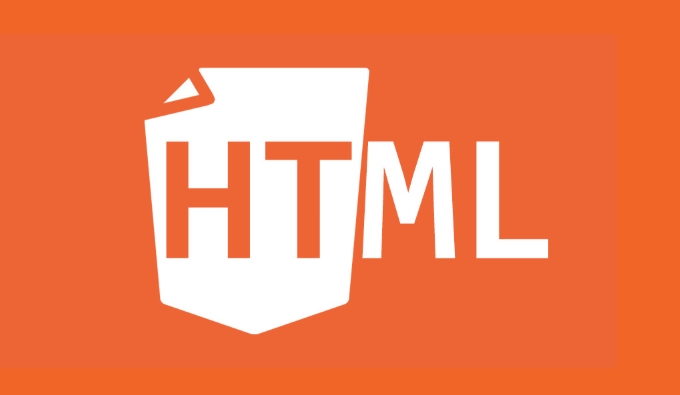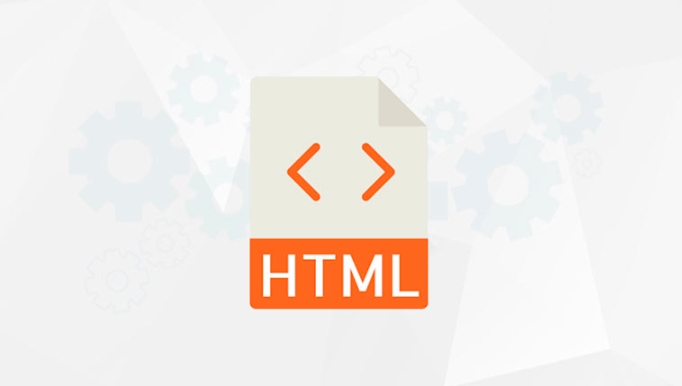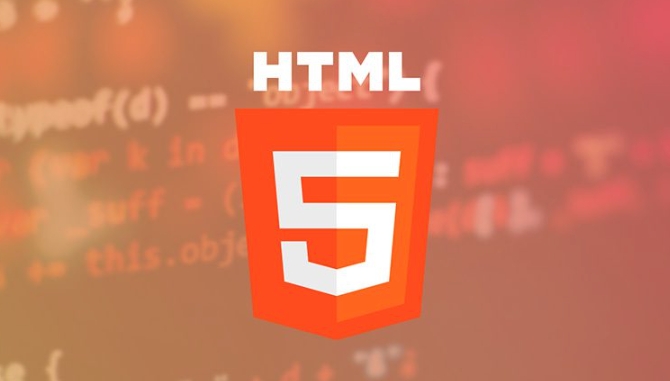How to make form input fields mandatory using html attributes?
Jul 07, 2025 am 01:50 AMThe most direct way to make the input box in an HTML form required is to use the required property. This property is Boolean type, and no value is required. It can be used to verify it on the input, select or textarea tags, such as: <input type="text" name="username" required>; Common matching types include text, email, password, etc.; for checkbox, directly add required to force check; in the radio button group, just add required to the first option; the select drop-down box needs to set the default empty value option to trigger verification; different browsers may have different styles and contents of prompt information. If a unified prompt effect is required, you can customize verification with JavaScript or third-party libraries.

The most direct way to make the input box in an HTML form required is to use required property.

This property is simple, but practical. As long as it is added to <input> , <select></select> or <textarea></textarea> tags, the browser will automatically check whether the content has been filled in when the user submits the form. If not, a prompt message will pop up to prevent the submission.

How to use required attribute correctly
The usage is very simple, just add required to the fields you want to set as required:
<input type="text" name="username" required>
Or write a dot prompt message (although the prompt message is not necessary):

<input type="email" name="email" required placeholder="Please enter your email">
It should be noted that required is a Boolean property and does not require assignment. Writing required="required" also has the same effect.
Common input types used together include:
-
text -
email -
password -
number -
tel -
url -
checkboxandradio(special attention is required)
Frequently Asked Questions and Notes
Although required is very convenient, there are still several details to pay attention to in actual use:
Checkbox : If you want the user to check a certain option, add
requiredto<input type="checkbox">.<input type="checkbox" name="agree" required> I agree to the terms
Radio button group : You need to add
requiredto each<input type="radio">, but in fact, as long as one of them is selected, it will be considered to pass the verification. So usually you just need to add the first one in the group, and the browser will automatically recognize the entire group.Pull-down selection box : also supports
required, but the default first option is best set to a null value, so that the user must actively select a valid item.<select name="gender" required> <option value="">Please select gender</option> <option value="male">Male</option> <option value="female">Female</option> </select>
Different performances under different browsers
Although modern browsers support the
requiredattribute, the style and display of prompt information may be different. For example, Chrome will pop up a small bubble and prompt "Please fill in this field", while Firefox may have slightly different texts.If you want to unify the prompt style or content, you need to use custom verification logic in combination with JavaScript, or use a third-party form verification library.
However, for most basic scenarios, native
requiredis enough, especially suitable for projects with rapid development and no particularly complex user experience requirements.
Basically that's it. Adding
required, you can complete the required verification of the form, which is not complicated but is easy to ignore some small details, especially the processing methods of checkbox and radio.The above is the detailed content of How to make form input fields mandatory using html attributes?. For more information, please follow other related articles on the PHP Chinese website!

Hot AI Tools

Undress AI Tool
Undress images for free

Undresser.AI Undress
AI-powered app for creating realistic nude photos

AI Clothes Remover
Online AI tool for removing clothes from photos.

Clothoff.io
AI clothes remover

Video Face Swap
Swap faces in any video effortlessly with our completely free AI face swap tool!

Hot Article

Hot Tools

Notepad++7.3.1
Easy-to-use and free code editor

SublimeText3 Chinese version
Chinese version, very easy to use

Zend Studio 13.0.1
Powerful PHP integrated development environment

Dreamweaver CS6
Visual web development tools

SublimeText3 Mac version
God-level code editing software (SublimeText3)

Hot Topics
 How to get HTML form data as text and send to html2pdf?
Sep 06, 2023 pm 12:21 PM
How to get HTML form data as text and send to html2pdf?
Sep 06, 2023 pm 12:21 PM
html2pdf is a JavaScript package that allows developers to convert html to canvas, pdf, images, and more. It takes html as parameter and adds it to pdf or desired document. Additionally, it allows users to download the document after adding html content. Here we will access the form and add it to the pdf using the html2pdfnpm package. We will see different examples to add form data to pdf. Syntax User can follow the following syntax to pass html form data as text and send it to html2pdf. varelement=document.getElementById('form');html2
 How to allow multiple file uploads in HTML form
Aug 28, 2023 pm 08:25 PM
How to allow multiple file uploads in HTML form
Aug 28, 2023 pm 08:25 PM
In this article, we will learn how to allow multiple files uploads in HTML forms. We use multiple attributes to allow multiple file uploads in HTML forms. Several properties are available for email and file input types. Ifyouwanttoallowausertouploadthefiletoyourwebsite,youneedtouseafileuploadbox,alsoknownasafile,selectbox.Thisiscreatedusingthe<in
 PHP file upload tutorial: How to upload files using HTML forms
Jun 11, 2023 am 08:10 AM
PHP file upload tutorial: How to upload files using HTML forms
Jun 11, 2023 am 08:10 AM
PHP file upload tutorial: How to use HTML forms to upload files In the process of website development, the file upload function is a very common requirement. As a popular server scripting language, PHP can implement the file upload function very well. This article will introduce in detail how to use HTML forms to complete file uploads. 1. HTML form First, we need to use an HTML form to create a file upload page. In the HTML form, the enctype attribute needs to be set to "multipart/form-
 How to process HTML forms using Java?
Aug 10, 2023 pm 02:05 PM
How to process HTML forms using Java?
Aug 10, 2023 pm 02:05 PM
How to handle HTML forms using Java? HTML form is one of the commonly used interactive elements in web pages, through which users can input and submit data. Java, as a powerful programming language, can be used to process and validate HTML form data. This article will introduce how to use Java to process HTML forms, with code examples. The basic steps for processing HTML form data in Java are as follows: monitor and receive POST requests from HTML forms; parse the parameters of the request; process data according to needs
 PHP regular expression: how to match all form tags in HTML
Jun 23, 2023 am 10:38 AM
PHP regular expression: how to match all form tags in HTML
Jun 23, 2023 am 10:38 AM
In web development, it is often necessary to use regular expressions to match strings. In HTML, the form tag is a very important tag, so if we need to get all the form tags in the page, then regular expressions become a very useful tool. This article will introduce using regular expressions in PHP to match all form tags in HTML. 1. The form tag in HTML The form tag is a very important tag in HTML. It is used to create forms. The form is used
 What is the method attribute, and how do I use it to specify the HTTP method (GET or POST) used to submit the form?
Jun 24, 2025 am 12:55 AM
What is the method attribute, and how do I use it to specify the HTTP method (GET or POST) used to submit the form?
Jun 24, 2025 am 12:55 AM
ThemethodattributeinHTMLformsdetermineshowdataissenttotheserver,usingeitherGETorPOST.GETappendsdatatotheURL,haslengthlimits,andissuitablefornon-sensitiverequestslikesearches.POSTsendsdatainthebody,offersbettersecurity,andisidealforsensitiveorlargedat
 Best practices for structuring complex HTML forms.
Jul 03, 2025 am 02:33 AM
Best practices for structuring complex HTML forms.
Jul 03, 2025 am 02:33 AM
The key to designing complex HTML forms lies in content organization rather than encoding. To improve user experience and reduce error rates, the following steps must be followed: 1. Use and divide logical blocks to enhance structural clarity, accessibility and maintenance; 2. Clear the binding relationship between controls and tags, and ensure that each input box has corresponding tags through for and id; 3. Use hidden fields and conditions to display reasonably, combine CSS/JS to control the display status and process data validity; 4. Design hierarchical error prompts to avoid relying on color only to distinguish. It is recommended to add icons, highlight borders and set summary areas.
 What are the various input types available in html forms and their uses?
Jul 04, 2025 am 03:06 AM
What are the various input types available in html forms and their uses?
Jul 04, 2025 am 03:06 AM
HTML forms support multiple input types to suit different data entry requirements. 1. Text input is used for basic data entry, such as text and password, and interaction can be enhanced through placeholder, maxlength, required and other attributes; 2. HTML5 introduces special input types such as email, number, date, tel, and url to improve data accuracy and usability; 3. Selection and operation controls include checkbox, radio, submit, and button, for multiple selection, single selection and submission operations; 4. Hidden is used to pass uneditable data, and file is used for file upload and can limit file types. When using it, you need to consider browsing






